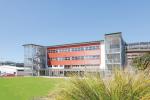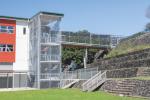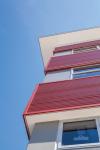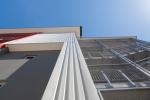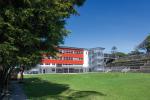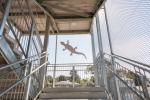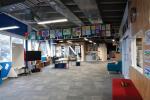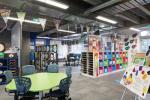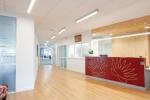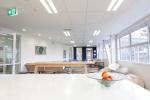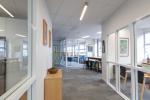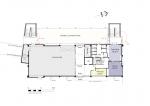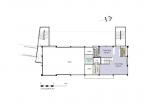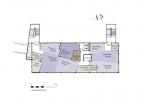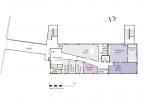Fat Parrot Architecture Takes Education Higher
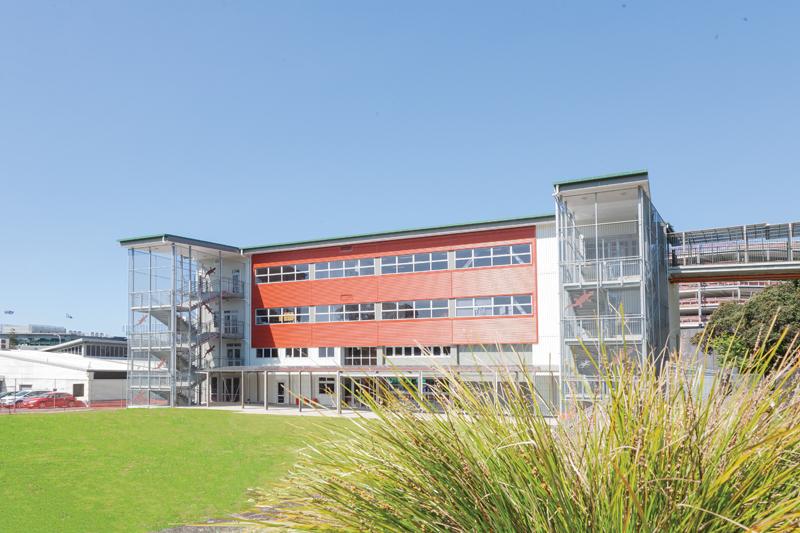
At the end of 2017, Statistics New Zealand estimated the population of Auckland to be 1.66 million. It is projected to grow to over 2.3 million people by 2043.
Population growth in Auckland not only puts pressure on the housing market, infrastructure such schools also need to adapt.
As the city grows and matures there will inevitably be a demand for more high-rise apartment buildings. In turn the existing schools will need to be able to cope with the predicted increase in student numbers.
During the early 2000s the Ministry of Education realised it will either need to purchase new land for bigger schools in the central city area or significantly increase the capacity of existing schools.
The potential cost and time of finding, purchasing, and developing new schools make it an unattractive proposition. The Ministry decided to pursue redevelopment of existing schools. One of the first on the list was Newmarket Primary School.
The school is situated on the fringe of the Newmarket business district and borders a busy thoroughfare. Unusual topography for a school divided the ground into two distinct areas. The existing classrooms and administrative block were located on a higher level; the sport fields, additional car parking area, and old school hall were on a lower level. The two levels are separated by approximately 10m high bluestone terraced walls. Access between the levels was via steps running down one side of the stone terraces, under a grove of large protected Pohutukawa trees along the road frontage.
The school approached Fat Parrot Architecture in 2011 to prepare a submission for redevelopment. The redevelopment had to include a new administration area, library, staff room, toilets, offices, twelve classrooms, and a new school hall.
Keeping the need for intensification in mind, Fat Parrot Architecture developed the concept of a 4-storey building, with the ground floor accessed from the lower field area and the top floor from the upper level.
Fat Parrot’s Graeme Fanselow says, we realised to be cost effective, the external envelope and structure of the building had to be simple, leading to a rectangular form and commercial construction methodology being adopted.
The initial concepts incorporated staging options. The new hall at ground level would open onto the playing field, the new administration area set on the top floor with direct access via a bridge to the upper area, and traditional cellular classrooms between. These facilities would have been serviced by external circulation areas and a large lift for people with disabilities.
Wendy Kofoed, Newmarket Primary School principal, says, “we knew we needed a small footprint. We also knew it was going to a long narrow building. The only way to achieve all that and increase capacity, was to go up.”
The company, in partnership with the school, refined the design to incorporate modern learning and teaching principles by opening the interior to create shared leaning spaces. The school proposed constructing the new building in its entirety, rather than the staged approach discussed earlier.
The Ministry of Education introduced a new classroom delivery program in 2013, which reinforced the single stage approach. The Ministry also emphasised the need for shared learning spaces.
Graeme says, “The new guidelines changed the rationale of some of the earlier layout decisions. The interior was redesigned to incorporate the efficiencies and more innovative layouts this enabled.”
Wendy says, “our philosophy at Newmarket had always been to create a building that is for the students as much as for the staff. We wanted a building that everybody could feel belonged to them. We shared our contextual knowledge with the design team. That contextual knowledge gives us a better understanding of the way spaces may be used. We needed the spaces to be adaptable. Sometimes students have ideas about changing the way rooms are used. They want more solitary nooks for reading or more shared spaces. This design gives us that fluidity.”
Graeme Fanselow says the external circulation added a lot of complexity to the external envelope. “It was going to be expensive to construct, posed some safety issues with small children and, unless it was large enough for group activity (which the budget wasn’t going to allow), effectively was not going to be used for large periods of the day.”
The team decided to move the horizontal circulation space inside, effectively making it a part of the learning areas. External stairs at each end and a central elevator provided for vertical circulation.
Nature threw another curve ball. Geotechnical investigations showed the building would sit over a tongue of lava that tapered the length of the building. “Since the brief was to future-proof the building by designing it to allow adding another two floors in future, we determined the lava could not be relied upon to support the structure,” says Graeme.
Contractors had to drill through the lava to the bedrock below, sometimes as deep as 18m below the surface. These holes were then filled with reinforced concrete to act as posts for the foundations.
The unknown nature of the fill behind the 150-year old bluestone terraces made foundation design for the bridge challenging. According to legend, fractured rock retrieved from building the nearby motorway was used for fill. Removing the bluestone terraces was not option, since it been a part of the school’s identity since it first opened in 1875. The same method of drilling through to the bedrock below was used to secure the bridge foundations.
Air pollution also proved to be an obstacle, due to the proximity of the motorway overpass and traffic associated with the nearby Newmarket business district. Air testing early in the design process showed the outdoor air quality in the area was not of a high enough standard to allow simple natural ventilation of the teaching areas.
Fat Parrot decided to provide a filtered air supply to the building, using existing trees as a first defence. Graeme says, “…the idea being, that the natural vegetation in that area would provide a degree of natural filtration and cooling of the air.” Using trees in this way should also help to reduce the maintenance schedule of the intake filters.
Winter heating is provided through the mechanical air supply.
Maintenance
“We realised that long-term external maintenance was going to present greater difficulties than would normally be the case…To minimise construction cost and time, and to simplify maintenance, we determined that the building envelope should be simple and made from as many pre-finished materials as possible.”
Framing and Cladding
Rondo steel stud was used for all internal and external framing.
Pre-finished long-run metal was chosen for the large mono-pitch roof area with horizontal and vertical metal cladding in combination with pre-finished fibre cement sheet and aluminium joinery on the upper levels, and predominantly pre-cast concrete at ground level for robustness.
The external finishes used were manufactured by Steel & Tube Roofing. The cladding was a combination of COLORSTEEL® Horizontal corrugate Custom Orb Maxx® in Pioneer red and STC900 vertical COLORSTEEL® Maxx® in Titania. Steel & Tube Roofing ST900 in green is matched to the steel gutters
Safety Mesh
The external stairs are pre-cast concrete landings and treads on an exposed galvanised steel frame. The stairs are covered in using a galvanised mesh external screen — which the school has since decorated using corrugated steel geckos.
“We decided to put galvanised steel geckos on the mesh, to enhance the look of the stairs from a distance, but also to make it visually interesting for the internal users,” says Wendy Kofoed. This is aligned with the recycled stainless steel gecko artworks along the front of the building.
Interior
The design team opted for substantially open plan learning areas for maximum flexibility, with smaller associated spaces to the perimeters connected by sliding glass doors for specialist learning, small groups, or quiet study.
The exposed concrete floor, steel frame, and services on cable trays allows the students to see how the building is constructed and how the services work. Wendy says, “with the raw concrete and rough-hewn planking we wanted to create that rawness you’d have seen in buildings 150 years ago. We also included lots of artwork and drawings depicting the history of the school.”
Clear finished timber wall and ceiling linings are used in selected smaller spaces to add warmth.
The upper level has a standard suspended ceiling beneath the roof structure, which has been designed to facilitate its removal should the additional floors be added in the future.
The breakout spaces use the image of a tree house and the cabbage tree theme is carried through in the design.
The Maori called Newmarket “Te Tı Tutahi”, which translates to the cabbage tree standing alone or the cabbage tree of singular importance, referring to a tree which stood on the corner of Mortimer Pass and Broadway (according to other references at the corner of Clovernook Road and Broadway) until 1908. Wendy says, “we wanted to keep that reference, it is part of our history.”
The principal’s excitement is evident when she talks about the new buildings. “Focusing on the learning experiences of the students, Newmarket School’s vertical teaching block includes a diverse range of learning environments. These include instructional, collaborative, reflective, technical, and smaller group areas that empower students to engage with their learning and passions.”
“It works really well,” she says. “Everything has a multipurpose function. The adaptability of the design allows us watch how students use spaces and change accordingly.”
“The students love the new buildings and want another one, but we will focus on upgrading the existing buildings.”


